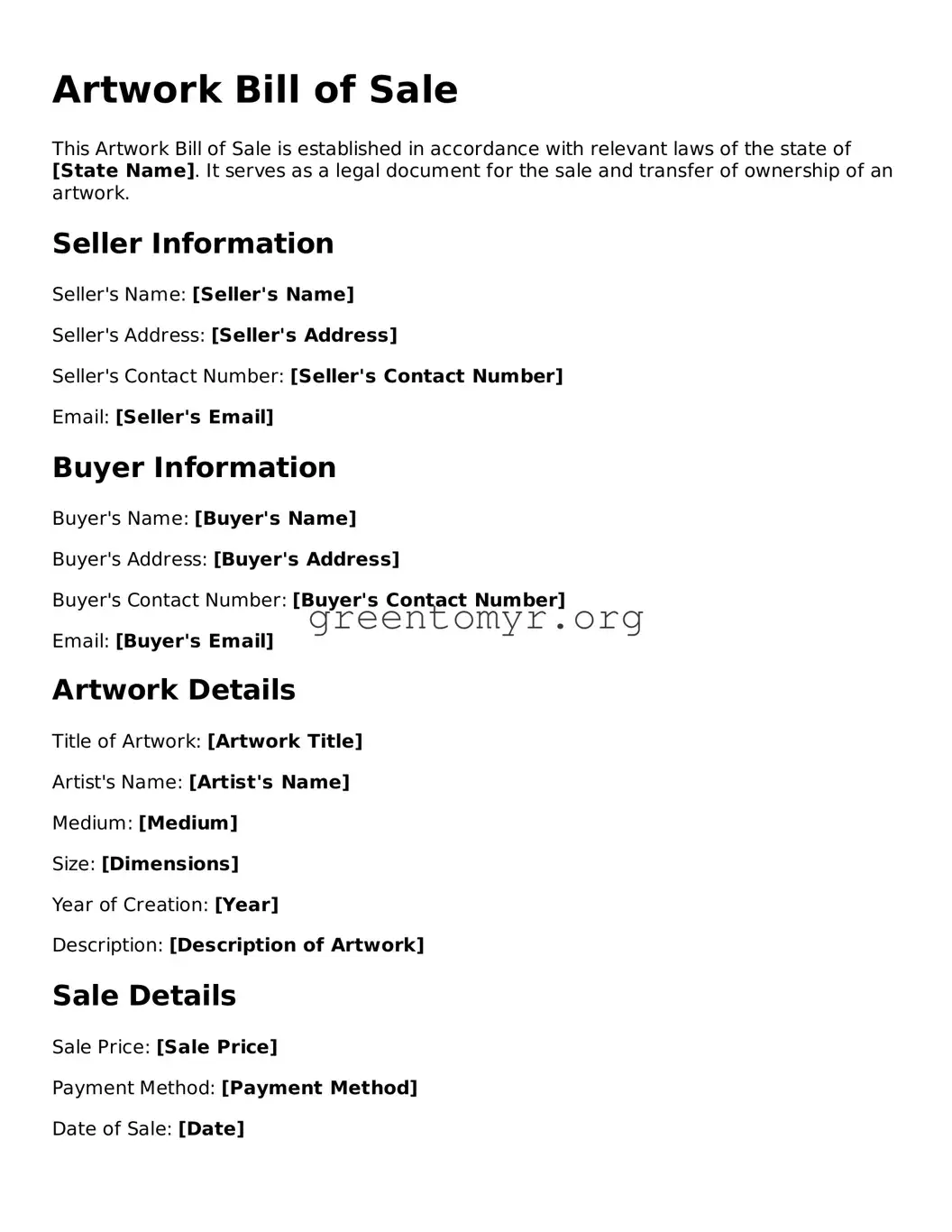What is an Artwork Bill of Sale?
An Artwork Bill of Sale is a legal document that serves as proof of the transfer of ownership of an artwork from the seller to the buyer. It includes important details about the artwork and the parties involved in the transaction.
Why do I need an Artwork Bill of Sale?
This form is essential for both buyers and sellers. It protects the rights of the seller by documenting the sale and can help the buyer prove ownership in the future. Additionally, it can assist in establishing the artwork’s provenance, which is important for its value.
Common details found in an Artwork Bill of Sale may include:
-
The names and contact information of the buyer and seller.
-
A description of the artwork, including title, artist, medium, dimensions, and any unique identifiers.
-
The sale price and payment method.
-
The date of the transaction.
-
Signatures of both parties.
Is the Artwork Bill of Sale required by law?
In many cases, an Artwork Bill of Sale is not legally required. However, it is highly recommended to protect both parties’ interests during the sale. Some jurisdictions may have specific laws regarding the sale of artworks, so it’s important to be aware of those.
Can I create my own Artwork Bill of Sale?
Yes, you can create your own Artwork Bill of Sale as long as it includes all necessary information to clearly outline the terms of the sale. There are also templates available online that can be customized to fit your needs.
What if the artwork is damaged after the sale?
Once the transaction is completed and the Artwork Bill of Sale is signed, the seller typically bears no responsibility for the artwork. Buyers should examine the piece before the sale and understand what they are purchasing. Buyers may consider purchasing insurance for the artwork after the sale.
How do I know if the seller has the right to sell the artwork?
Buyers should conduct due diligence before purchasing artwork. This may involve checking the seller's ownership claims, asking for documentation, and reviewing the artwork's provenance. A well-documented sale history can provide reassurance about the seller's rights.
Do I need to register the Artwork Bill of Sale?
Generally, there is no need to register an Artwork Bill of Sale, as it is a private agreement. However, keeping a copy for personal records is important. In some situations, especially for high-value pieces, buyers might want to retain additional documentation or provide copies to insurers.
Can I use an Artwork Bill of Sale for digital art?
Yes, an Artwork Bill of Sale can be used for digital art. The document should specify that the sale pertains to the digital artwork and may include information about how the buyer will receive it, as well as any specific rights granted to the buyer, such as limited licenses or reproduction rights.
What should I do if there is a dispute after the sale?
If a dispute arises after the sale, both parties should first attempt to resolve the issue amicably. Referencing the Artwork Bill of Sale can provide clarity about the terms of the sale. If resolution is difficult, legal advice may be necessary. Involving a mediator or arbitrator can often help resolve disputes without going to court.
